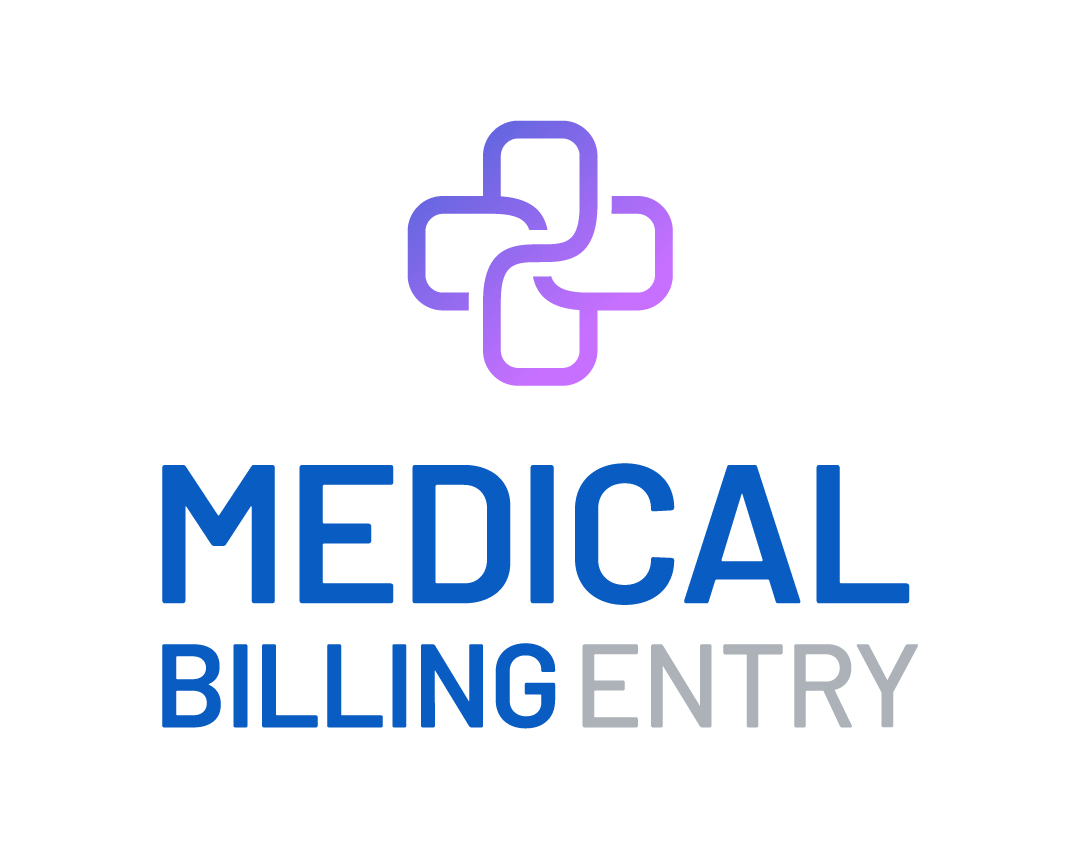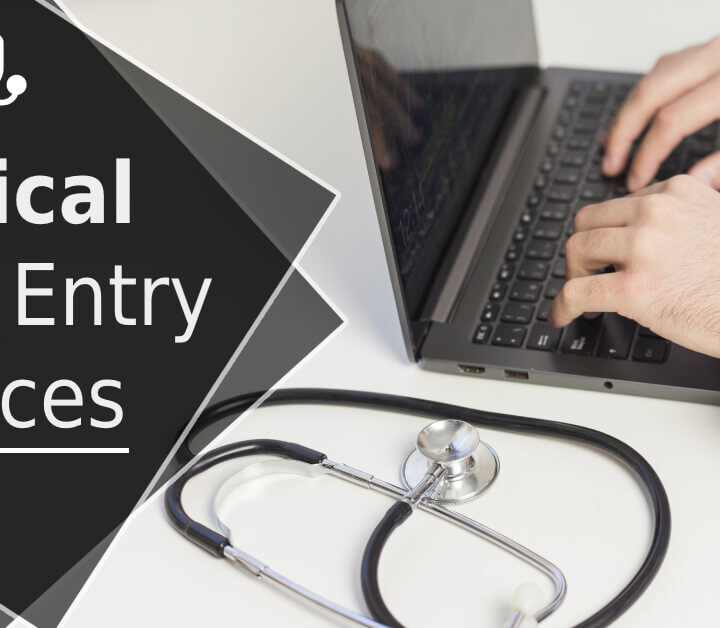Medical Billing Services
- Home
- Medical Billing and Coding
- Medical Billing Services
Medical Billing Services | Medical Billing Outsourcing | Top Medical Billing Service & Company | Outsource Medical Billing Services
Medical Billing Services Maximize Your Revenue Potential with Medical Billing Entry
Medical Billing Entry provides the highest quality Medical Billing Services in India, Ahmedabad, and across the globe. Our experienced team of medical billers and coders will help you maximize your revenue potential with our comprehensive billing and A/R management services.
MEDICAL BILLING and A/R MANAGEMENT
Without following Medical Billing best practices, your Healthcare Facility’s revenue cycle can be hugely impacted. Fortunately, Medical Billing Entry can provide medical billing & A/R management solutions that are tailored to meet the needs of hospitals, physician offices, IPAs and a variety of other Healthcare Providers. Our Medical Billing & A/R management solutions will help you reduce errors, speed up collections and boost your cash flow. All at the same time!
With our Revenue Cycle Management solutions, you’ll be able to give your full attention to the highest priority of your facility which is providing high-quality patient care. You can rely on us as an all-inclusive solution and have peace of mind. Our solutions are tailored to provide maximum optimization of revenue cycle management. This broad range covers Provider Enrollment & Credentialing, Insurance Verification, Payment Posting, Accounts Receivables, Denial Management and a whole lot more.
Our billing experts come with at least 15 years of experience and adhere to all necessary compliance regulations, such as HIPAA, HITECH, CMS In-Network, Out-of-Network. We ensure accuracy & privacy for all your payments through meticulous record keeping and the highest level of security standards. Medical Billing Entry stands out from other RCM companies as it provides comprehensive medical billing & A/R management services tailored to the specific needs of each facility. This ensures that all their requirements are met and often exceeded. Medical Billing Entry is an experienced provider of medical billing & A/R management services. Our team of experts not only handle your claims, but also investigate and address any issues that arise in your billing system. This ensures accuracy and better results for you.

- Medical billing services
- Medical billing company
- Medical billing services company
- Medical billing service providers
- Outsource medical billing services
- Outsourced medical billing services
- Top medical billing service & company
- Medical billing outsourcing
- Medical billing services in India
- Medical billing in Ahmedabad
- Medical billing in India
- Outsource medical billing
- Outsource medical billing in India
- Outsource medical billing in Ahmedabad
- Medical billing companies
- Medical billing and coding services
- Outsourced medical billing
- Revenue cycle management
- Medical claims processing
- Medical coding services
- Healthcare billing services
- Electronic medical billing
- Medical billing specialists
- Medical billing software
- Medical billing solutions
- Professional medical billing services
- Affordable medical billing services
- Best medical billing services
- Online medical billing services
- Remote medical billing services
- Medical billing support
BVAC, Mutuality and Hospital invoices
We Indexed the CNK codes, Patient amount, Supplement amounts and Mutuality amounts
Discover our revenue cycle management solutions, Medical Billing Entry’s medical coding Solutions, HCC Coding Solutions, ICD-10 Third Party Auditing Solutions and CDI Solutions to benefit your facility. Make use of the Medical Billing Entry Advantage and elevate your operations!
- Comprehensive End-to-End Revenue Cycle Management
- Provider Enrollment and Credentialing
- Pre-certification (Authorization) & Insurance Eligibility Verification
- Patient Demographic Entry
- Medical Coding
- Charge Entry
- Claims Submission
- Payment Posting
- Account Receivables Follow-up
- Denial Management
- Patient Collections
Specialties
- Ambulance Services
- Anesthesiology
- Cardiology
- Cardiovascular Surgery
- Chiropractic
- Dermatology
- Durable Medical Equipment
- Emergency Medicine
- Endocrinology
- Family Practice
- General Surgery
- Hematology / Oncology
- Internal Medicine
- Mental Health
- Motor Vehicle Injuries
- Nephrology
- Neurology
- Obstetrics / Gynecology
- Orthopedics
- Pain Management
- Pathology
- Pediatrics
- Physical & Occupational Therapy
- Podiatry
- Psychiatry
- Radiology
- Sleep Disorders
- Urology
- Workers Compensation
What is Medical Billing?
Healthcare providers rely on Medical Billing to get their claims processed & approved by insurers. This process is essential for ensuring efficient payment for the services they provide. It also helps keep track of all financial transactions related to healthcare in a secure and organized manner. After converting a healthcare service into an invoice, the medical biller tracks the claim to make sure that the organization receives adequate compensation for their services. Optimizing revenue performance for a physician practice or healthcare organization can be done effectively with the help of knowledgeable medical billers.
Is Medical Coding the Same as Medical Billing?
Medical coding and billing intertwine, as both are essential to the healthcare industry. Coders and billers report diagnoses, procedures & supplies to different payers like Aetna & Medicare. Without accurate information for reimbursement, it would be difficult for medical professionals to keep their businesses running.
Medical coders & billers are required to be well versed in medical terminology, anatomy and pathophysiology so as to be able to comprehend physician notes & operative reports. Additionally, they may sometimes help out with the billing process and code for billing companies. For smaller physician practices, there’s often an overlap in roles between medical coders and medical billers due to limited resources. Though billing and coding are two separate processes, they’re both essential parts of the healthcare revenue cycle – so neither should be overlooked.
What Medical Coders Do
Whenever a patient visits a medical professional for any kind of treatment, their medical records are kept in the form of medical charts. Medical coders examine the data and extract important information that can be used to generate standard codes for billing purposes.
Procedure codes are necessary for payers to understand what services were provided by healthcare providers. Diagnosis codes, as reported using ICD-10-CM, explain why the patient required those services.
What Medical Billers Do
Medical billers are the bridge between patients, healthcare providers, and insurance companies. They ensure that necessary data is collected initially, which helps in successful reimbursement of services provided. Information such as patient details, health background, insurance plans & the treatments or operations received can be kept under control by using this system.
To collect the required info, billers need to inspect patients’ medical records and insurance policies to confirm service coverage. Subsequently, they create medical bills, check for accuracy, and deliver the claim forms to payers. Once the claims have been reviewed and accepted, billers will receive them back with the amount which has been agreed upon by payers.
Prior to the patient’s appointment with the physician, billing specialists take care of the patient’s invoice. They factor in deductible and co-pay costs plus subtract any amount covered by insurance from what was spent on the treatment or service. Lastly, they add any remaining balance owed by the patient. Medical billers have a lot more work than simply sending out invoices and posting payments. Their day is filled with pre-billing, post-billing & reconciliation tasks before they can call it a job well done.
The Medical Billing Process
To ensure quick payments from insurance companies, medical billing must be completed with precision and timely follow-up. The process made up of multiple steps can take a couple of days to months. However, as mandated by most states, insurers have to complete payments in 30 or 45 days. Health insurance providers generally have strict claim filing deadlines that cannot be exceeded. In such cases, if the deadline is missed, the claim will be denied and no appeal can be taken for reimbursement. As a result, the organization may not get their due reimbursement.
Mistakes in the billing process can lead to heavy losses of income & manpower. This makes it even more important to have experienced and capable medical billers, who understand their responsibilities in the overall billing cycle and are able to efficiently execute them. The financial success of doctor’s offices and provider organizations such as hospitals, health systems, and surgery centers is reliant on the proficiency of their front-end & back-end billing personnel.
Front-End vs Back-End Medical Billing
The medical billing process involves two parts – what’s known as front-end and back-end. Front-end billing is done prior to the patient’s appointment with the doctor, and involves tasks such as insurance verification or scheduling. The front-office staff is responsible for all the activities that involve direct contact with patients, such as registration and billing process. It’s essential to get these details accurately noted in order to ensure proper billing procedures.
After a provider attends to their patient, the back-end billing process is initiated. After the medical coder finishes their job and the billing staff is able to access the medical codes that represent the patient encounter, processes at the back end start. This essentially means that these tasks are not focused on providing patient care.
Back-end billing staff take care of essential tasks related to claims management & reimbursement. These are just as important as front-end billing activities, where small mistakes often cause high claim denial rates. The billing process on the back-end is quite complex and requires certified billers to oversee each step. From claim preparation to post-adjudication activities, it necessitates a certain level of education and knowledge that only professional billers possess.
Front-End Medical Billing Front-line medical billing personnel need to be familiar with the type of insurance companies their organization deals with in order to successfully handle patient billing. Knowing the payer mix helps them determine the necessary steps and actions needed for accurate medical coding. Having an in-depth understanding of the various health plans & payers accepted by your organization is essential for billers. It helps them to verify insurance eligibility and keeps them updated on filing deadlines & preauthorization of services required by different payers.
Pre-Registration and Registration
The process of filing an insurance claim starts when a patient reaches out to their provider’s office or checks into the hospital for an appointment. Staff usually collect the details of the patient’s insurance & demographic information or, if they arrive at a place of service, they fill in a registration form.
To ensure accurate patient data capture, it’s important for the billing staff to have and adhere to standard operating procedures while registering patients. With correct data, hospitals get better insights into the patient’s eligibility and benefits as well as prior authorization easily.
Insurance Eligibility Verification
For payment to be received for services, front-office personnel must check that the services are covered by the patient’s health coverage plan. Checking eligibility is an important step that establishes patient coinsurance, co-pay, deductible & plan benefits. It can be done either over the phone or via electronic verification tool created by the Insurance company. This process also verifies effective dates & plan benefits according to specialty & place of service.
Preauthorization is vital if you want to be reimbursed by insurance companies. It is an important requirement for certain medical services, especially those done outside of the regular primary care provision. Most insurers require preauthorization as a condition before they pay out on claims.
Point of Service Collections
Verifying the patient’s benefit information at the beginning of a transaction helps staff estimate the financial responsibility. This allows them to collect any copays, deductibles, coinsurances, or full balance due from the patient while they are still at the front desk. Doing so during check-in or checkout is ideal for effective payment management.
Patient balance follow-up can become quite costly for any medical practice. Point of service collections play an important role when it comes to reducing this expense and even help in preventing bad debt & write-offs.
Encounter Form Generation
An encounter form, which goes by the name of ‘superbill’ or ‘fee ticket’, is generated for every patient meeting. It contains basic info of the patient as well as a list of services (with their assigned medical codes) commonly rendered. Additionally, this form allows the clinician to note down the diagnosis and other relevant details related to that visit.
Front-end workers create the encounter form, which is used to communicate the quantity and type of services given to a patient. When a patient consultation is finished, the healthcare provider will select the necessary services that were provided from an electronic encounter form & sign it to confirm its authenticity. This can be done easily if they use an EHR and practice management system.
Checkout
At this point in the payment cycle, workers need to check if a follow-up is necessary and ensure that the medical team has finished their paperwork. In addition, Checkout also provides an extra chance to gather funds during service delivery.
Once the patient has received treatment, medical coders acquire the records and transform the billable data into medical codes.
Back-End Medical Billing
Medical billers need to be familiar with medical documentation, CPT®, HCPCS Level II, and ICD-10 codes in order to effectively communicate with doctors & understand patient encounters. In addition, they must be experts in reading medical records.
Charge Entry
Encounter forms provide an overview of the services & procedures done and the reasons for them. All this data is then entered into the practice management system by charge entry staff, along with any payments that have been made at the time of service.
If an encounter form is missing a diagnosis, which is necessary for reimbursement, charge entry staff members must contact the provider to get the information needed.
Charge entry jobs also involve periodically reviewing charges and payments to make sure all amounts are accurately accounted for while reconciling patient charges. At the close of every day, a review of the charges and payments made on encounter forms is done to ensure they reconcile with what was posted in the system’s daily charge report.
Claim Generation
After all the necessary charges and payments have been entered, creating a claim is the next step. This will involve collecting different types of codes such as CPT®, HCPCS Level II, Revenue Codes and ICD-10 codes.
Medical billers have the capacity to pull data from the superbill manually or electronically, allowing them to craft an accurate claim. A superbill is an important document used to record patient details along with information about the services provided. It also contains the diagnosis that helps to confirm the accuracy of the services rendered. So, if you remember, a superbill can be used for tracking patient visits and verifying medical services.
This form provides a detailed breakdown of services provided, including the date they were rendered and essential provider information like name, location, signature & NPI. In addition to providing notes & comments to explain medically required services, the medical record might include info related to admitting date and details of billing & referral providers. This is an important part of maintaining accurate medical records.
After collecting the required data, it is converted into a claim which is then sent to external payers for reimbursement.
Claim Scrubbing
Before sending out a claim for payment, billers go through an in-depth process called ‘claim scrubbing’. This helps to make sure all code-related information, such as diagnosis codes and modifiers, are correct. It also ensures that all necessary patient & provider info needed for the claim is included correctly. To complete this part of the billing process, medical billers typically make use of claim scrubbing software. This software can detect & resolve errors that may have been overlooked and thus ensures accuracy.
Certain medical businesses and provider organizations will submit bills to clearinghouses, either in addition to or as an alternative to running them through scrubbing processes. A clearinghouse is a great option to alleviate the paperwork stress when dealing with medical claims. They review, edit, and format them before pushing them to the insurance payers – eliminating the need for corrections and speeding up the process.
Claims Forms
Medical billers generally rely on one of two forms to receive reimbursement from health insurers – the UB-04 and the CMS-1500 claim forms, both of which are issued by the Centers for Medicare & Medicaid Services.
The CMS-1500 and the UB-04 claim forms are used to submit details regarding professional services and procedures carried out by providers or inpatient facilities respectively. The CMS-1500 is more commonly known as the UB-04 claim form.
Claim Submission
Organizations that offer services can submit their claims to insurers directly. To make sure the claim meets HIPAA regulations, an electronic filing software should be used. Most clinics, however, prefer to use a clearinghouse for submitting medical claims.
Clearinghouses provide a range of services, including reviewing claims to ensure they comply with payer policies & federal regulations. If any errors are found during the review process, the biller will be asked to rectify them and then the corrected claims will be sent to the payer.
Once a claim is sent to the payer, it is processed in the clearinghouse and converted into a claim form for further assessment. The claims analyzer or adjudicator will then review the file before making a decision. The clearinghouse report should make it clear when a claim has been received by the payer. In addition, added comments from the payer may be included in the report, such as a note regarding patient eligibility for date of service.
Claim Tracking
The job of medical billers doesn’t end with submitting the claim. They must keep tabs on the status of the claims by checking them on a daily basis. Moreover, when clearinghouses are used, they offer helpful dashboards which give easy access to details about all submitted claims and their statuses.
Once the claim is submitted to the payer, adjudication begins. This involves reviewing all of the necessary information and determining if and how much the provider should be paid. The amount is based on whether or not all of the provided data is valid and meets the requirements for payment.
Following adjudication, payers generate two types of statements:
Payment Posting
As soon as practices or hospitals get their ERAs and related payments through either check or direct deposit, they should take the necessary step of posting the payments. It’s important to remember this includes zero-dollar remittances which often include denial codes & other essential information.
Medical billers need to ensure that payments are correctly allocated to patient accounts and that the data from ERA or EOB matches deposits received. At the end of every day, they must verify that all direct deposits have been posted, and check if everything is in balance.
Patient Payments
Promptly sending patient statements with all outstanding costs the moment remittance advice is posted will facilitate quick reimbursement. The earlier the patient receives their statement, the faster it will be taken care of. Statements sent to patients should include information such as the date they received the service, details of what took place, the amount of money insurance paid out for that specific service, payments collected at the time of service and why there is an outstanding balance.
After patients have paid up their due bills, the payments should be registered and balanced out. This is usually the last step for a lot of patient cases, after which the accounts can be closed and billing process finalized.
Denial Management
When insurers deny claims, the billing staff should act quickly to resolve the issue. The remittance advice will provide them with a code & explanation for why the claim was denied so that they can start working on it immediately. The denied claim must be gone over by the billing team to check if any additional info is needed, if there are mistakes that need rectifying, or whether an appeal should be filed.
To counter denial of medical claims, billing staff and medical coders often work together to determine the cause. Once this is done, the billers prepare an appeal letter & resubmit the claims for processing.
A/R Collections
The last step in medical billing is patient collection. Unfortunately, some patients may struggle to make payments for their treatments and, in such cases, medical billers will reach out to them after a set period and remind them of their financial obligations.
In addition to providing clear communication and responding to queries promptly, patient follow-up could also include small conveniences like payment plans or online payment options. This can help reduce bad debt and accelerate collections swiftly.
After collection, medical billers forward the income to A/R management so that payments can be monitored & recorded correctly.
Credit Balances
When providers receive payments beyond the charges for medical services, it can pose a major risk to their organization. This is due to the existing credit balances. Taking care of overpayments is a major responsibility for medical billing staff. If they fail to identify and promptly refunds them, it can lead to costly litigation and monetary fines. Therefore, it is important for staff to be aware of any events that may result in a credit balance.
Thinking of becoming a certified professional biller? Medical Billing Entry can get you ready to take your CPB certification and make a career in the medical billing field. They are the most trusted and reputed organization for training & certifying medical coders & billers. Take advantage of their flexible, tailored programs and enroll today!
Medical Billing Services in World Wide
Our team of certified medical billers and coders have years of experience working with clients in India and Ahmedabad to provide the highest quality medical billing services. Our expertise allows us to ensure maximum reimbursement for all claims, while minimizing errors and denials.
Outsource Medical Billing Services
Our team is equipped to handle all aspects of your medical billing process, including claim submission, follow up on unpaid claims, appeals, patient collections, and more. We guarantee accurate coding to ensure that all claims are paid correctly and timely.
Medical Billing Company You Can Trust
We understand the importance of having an experienced and reliable partner for all your medical billing needs. Medical Billing Entry is committed to providing the best customer service, so you can be confident that your business is in good hands.
When it comes to finding a trustworthy medical billing company, you’ve landed on the perfect spot. Reach out to us now and let us handle all your medical billing needs with utmost professionalism and reliability. Don’t hesitate, contact us today at info@medicalbillingentry.com
We Organize Our
Production Process
- Accurate, Reliable
- Outsource data
- data secure
- Request Free Quote
By selecting Medical Billing Entry & Healthcare Services, you will be tapping into a wealth of expertise in medical billing & Coding MBE services that spans over 15 years. Medical billing is a form of communication between the healthcare provider and the payer to ensure that costs related to medical services are appropriately recorded and paid.
Top Medical Billing Service & Company, Medical Billing Outsourcing, Medical Billing Company, Medical Billing Services in India, Medical Billing in Ahmedabad, Medical Billing in India, Outsource Medical Billing, Outsource Medical Billing Services, Outsource Medical Billing in India, Outsource Medical Billing in Ahmedabad
Rest assured that your Medical Billing Data & Healthcare Data is in good hands with our HIPAA compliant services. Our team is extensively trained in safeguarding your data and ensuring that it meets the strictest industry standards for security. You can trust us to provide secure access to all your important information, giving you peace of mind knowing that your sensitive data is protected at all times.









